Foyer, 2ème étage, Migration : Mark Henley | Kerim Knight | Sylvie Léget
Grande salle, Territoires : Aline Henchoz | Norman Behrendt | Algirdas Bakas | Yan Morvan | Harry Gruyaert | Edward Burtynsky | Yu
Cette série de photographies est issue d’un mandat de l’Hospice général destiné à documenter le quotidien des demandeurs d’asile à Genève. L’Hospice a pour mission de prendre soin de ces personnes souvent traumatisées et dans l’attente d’une décision :
«Pour l’instant, on ne se considère pas comme une personne. Tant qu’on n’a pas de permis de séjour, on n’est rien du tout. On vit dans la peur. On n’existe même pas. On ne sait pas où on va vivre et même si on va vivre. Certains ici attendent la décision de Berne pendant deux ans, avant d’apprendre qu’ils vont être renvoyés. Après avoir vécu dans la sécurité, c’est insupportable.»
Asmeron d’Erythrée
This series of photographs is drawn from a commission documenting the daily life of people seeking asylum in Geneva from the Hospice Général which is charged with the care of these often traumatised people, waiting:
“We don’t even feel like people at the moment. Without a residence permit, we‘re nothing at all. We live in fear. We don’t even exist. We don’t know where we’re going to live or even if we’re going to live. Some people wait here two years for the decision from Bern only to find out they’re going to be sent back. After living in safety, it’s unbearable.”
Asmeron from Erytrea
Migration, Alhambra, Foyer, 2e étage
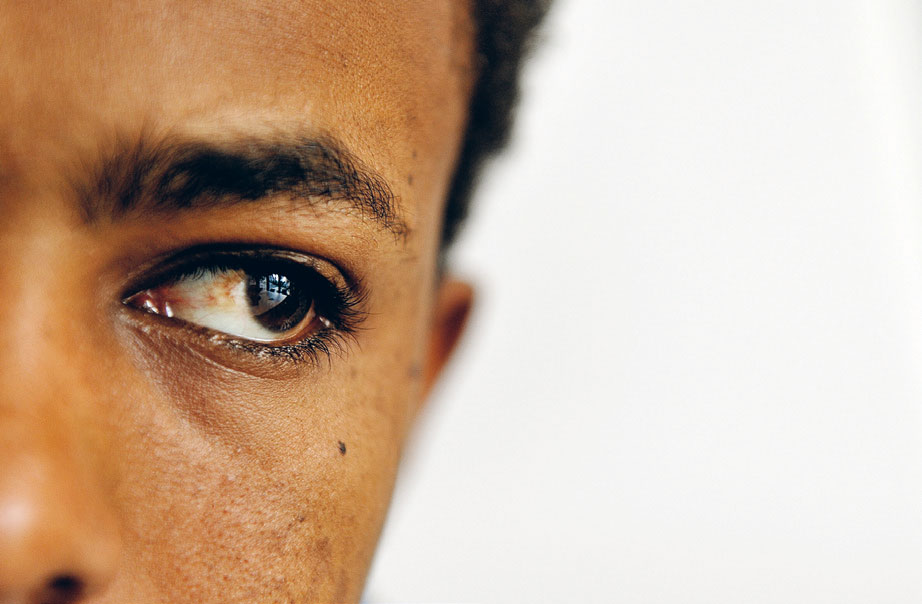 © Mark Henley
© Mark HenleyLe projet est né d’une volonté de mettre en valeur et en évidence les histoires de vie des participants du Centre de la Roseraie à travers le medium photographique et la vision du photographe Kerim Knight.
Face à la déshumanisation de plus en plus courante des personnes migrantes, l’objectif est de permettre à chacun de se retrouver au centre du débat. A travers une série de portraits, cette projection souhaite restituer l’humain au coeur des processus migratoires et d’intégration tout en valorisant et reconnaissant leur participation à la vie genevoise.
Une goutte de notre époque s’affiche dans les rues de Genève. Tentez le quiz intitulé Goutte ? Moi ! sur unegouttedenotreepoque.ch
This project was born of a desire to acknowledge and showcase the life stories of people at the Centre de la Roseraie through photography and the vision of the photographer Kerim Knight.
Given the increasing dehumanization of migrants, the idea was to bring those affected right to the centre of the debate. Through this series of portraits, the projection hopes to place real people at the heart of the migration and integration processes, while valuing and recognising their participation in Genevan life.
A Drop of our Time is being exhibited in the streets of Geneva. Try the quiz Drop? Me! unegouttedenotreepoque.ch
Migration, Alhambra, Foyer, 2e étage
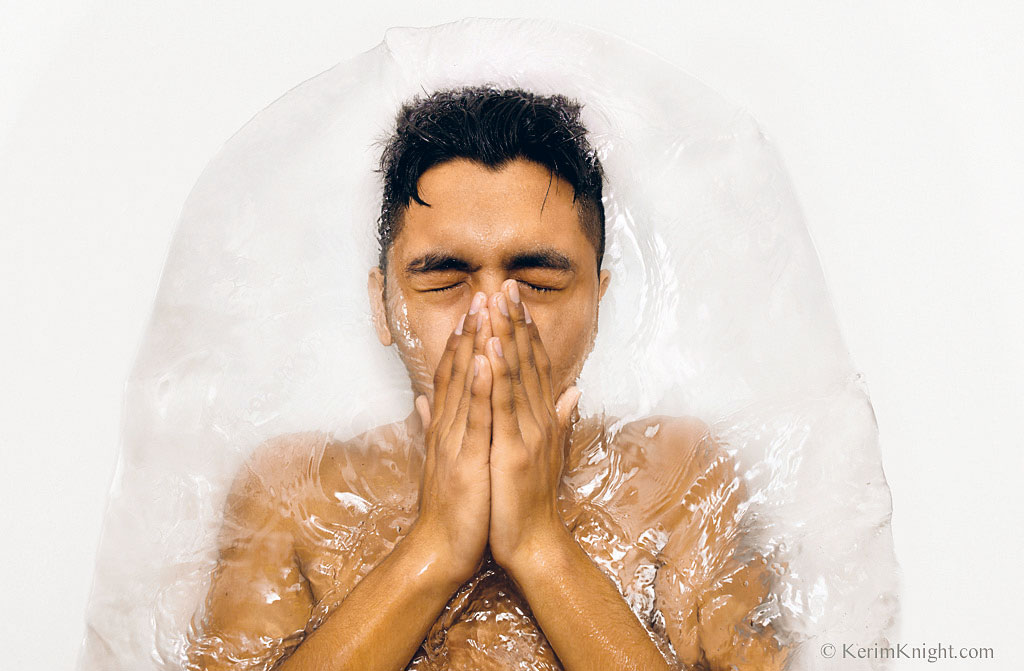 © Kerim Knight
© Kerim KnightAu-delà des naufrages de migrants en mer, au-delà des geôles aux confins sud de la Méditerranée, au-delà de nos propres craintes, sécuritaires ou économiques, des combats quotidiens se jouent là, à côté de nous. La lutte des mères requérantes d’asile ne connaît aucun répit.
«Victory» est le premier chapitre d’une longue histoire contée à travers le prisme d’une valeur humaine universelle : la maternité. Victory est né dans la douceur d’un hôpital suisse. Ce jour-là, sa mère a eu 30 ans. Elle vit maintenant seule avec ses quatre enfants dans un foyer de l’Hospice général.
Mais au fait, pourquoi donc «Victory» ?
Plus d'infos: www.sylvieleget.com
In addition to the shipwrecked migrants, the jails on the southern shores of the Mediterranean or our own security or financial concerns, daily battles are going on right here, on our doorstep. There’s no respite from the struggle for asylum-seeking mothers.
«Victory» is the first chapter in a long story told through the filter of a universal human value: motherhood. Victory was born in the comfort of a Swiss hospital. On the day of his birth, his mother was 30 years old. She now lives alone with her four children in a hostel run by the General Hospice.
But why «Victory», in fact?
More info: www.sylvieleget.com
Migration, Alhambra, Foyer, 2e étage
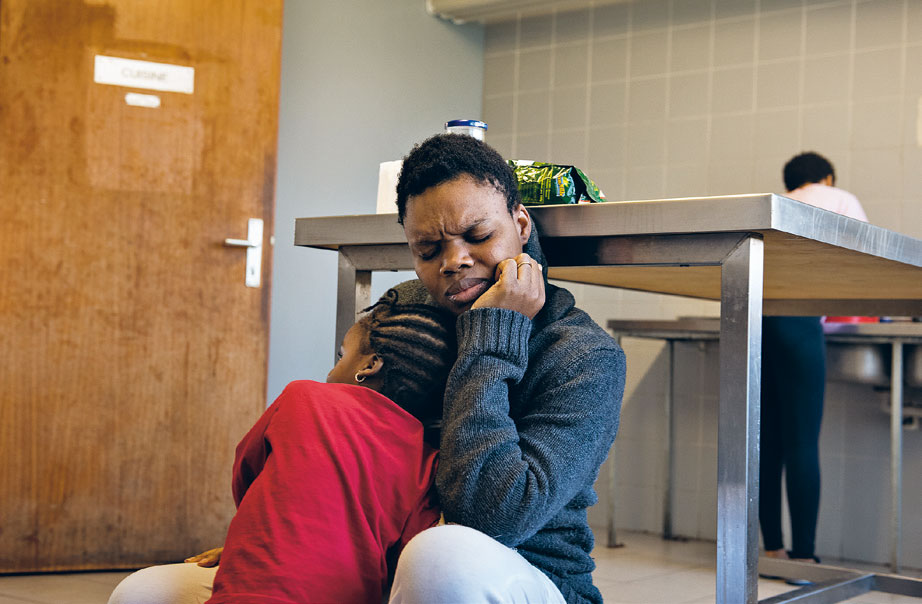 © Sylvie Léget
© Sylvie LégetDébut 2000, les «Golf Resorts» ont commencé à pousser comme des champignons dans la région désertique de Murcie au sud de l’Espagne. Ces complexes proposent des parcours de golf de 18 trous et des infrastructures aussi luxueuses qu’énergivores qui contribuent à l’appauvrissement des ressources naturelles. Avec la crise immobilière de 2008 et les problèmes d’approvisionnement en eau, la plupart de ces projets pharaoniques ont été abandonnés en cours de construction. Si certains sont encore en partie habités, beaucoup ont été désertés et laissés à l’état de friche, prenant ainsi des allures de villes fantômes.
In the early 2000s, golf resorts sprang up like mushrooms in the desert region of Murcia in southern Spain. These complexes offered 18-hole golf courses with luxurious and energy-consuming facilities that contributed to the depletion of natural resources. Following the real estate crisis in 2008 and water supply problems, most of these mammoth projects were abandoned in course of construction. Some are still partly inhabited, but many are completely deserted and left to decay, becoming real ghost towns.
Territoires, Alhambra, Grande Salle
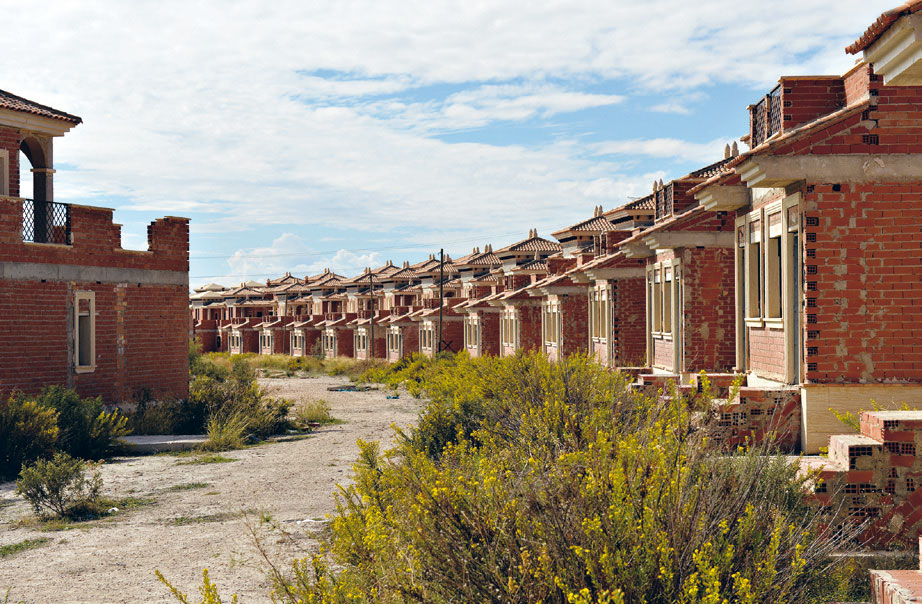 © Aline Henchoz
© Aline HenchozEn 1924, Mustafa Kemal Atatürk abolit le califat et fonde la République de Turquie, avec l’ambition de transformer l’Empire ottoman en un Etat moderne, démocratique et laïque. Moins d’un siècle plus tard, Recep Tayyip Erdoğan et son parti l’AKP souhaitent le retour de la Turquie à son glorieux passé ottoman. Ainsi le budget de la Présidence des affaires religieuses a augmenté de manière exponentielle, devenant un instrument politique promouvant l’éducation théologique et la construction de milliers de nouvelles mosquées dans un style ottoman. Entre 1987 et 2013, le nombre de mosquées en Turquie est ainsi passé de 60 000 à plus de 85 000.
In 1924, Mustafa Kemal Atatürk abolished the Caliphate and founded the Republic of Turkey, aiming to transform the Ottoman Empire into a modern, democratic and secular state. Less than a century later, Recep Tayyip Erdoğan and his AKP party want to return Turkey to its glorious Ottoman past. The budget of the Presidency of Religious Affairs has grown exponentially, and it has become a political instrument promoting religious education and the construction of thousands of new mosques in an Ottoman style. Between 1987 and 2013, the number of mosques in Turkey went from 60,000 to over 85,000.
Territoires, Alhambra, Grande Salle
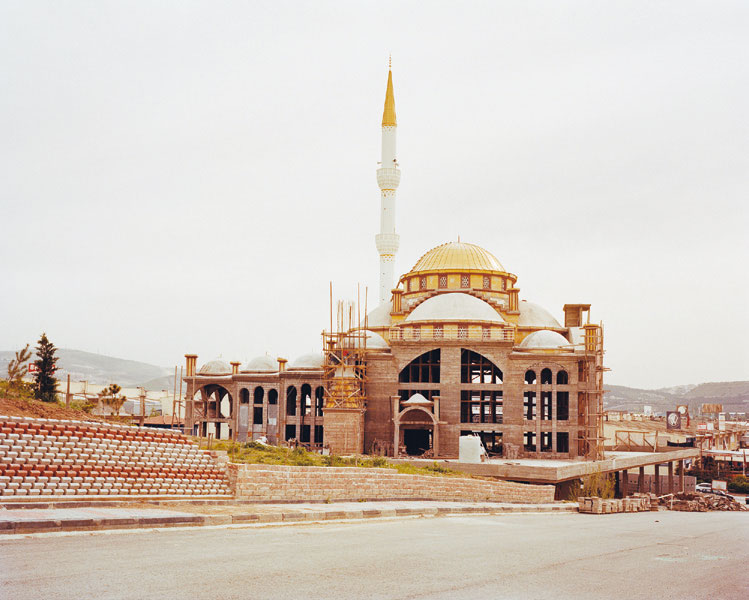 © Norman Behrendt
© Norman BehrendtRégion la plus occidentale et la plus petite de la Fédération de Russie, l’oblast de Kaliningrad est une exclave donnant sur la mer Baltique. Portant encore le nom d’un ancien dirigeant soviétique, Kaliningrad, ancienne Königsberg, est passée durant le XXe siècle de la grandeur prussienne à la partie la plus militarisée de l’Union soviétique. Le travail d’Algirdas Bakas fait le portrait d’une ville et de ses habitants qui, à l’image de leur situation géographique, oscillent entre nostalgie et fascination, à la fois pour l’Est et pour l’Ouest, entre héritage soviétique et culture occidentale, entre Moscou et Berlin.
The most western and smallest region of the Russian Federation, the Kaliningrad Oblast is an exclave on the shores of the Baltic Sea. During the 20th century, Kaliningrad, named after a former Soviet leader and previously known as Königsberg, went from its earlier Prussian grandeur to become the most militarized zone of the Soviet Union. Algirdas Bakas’ work depicts a city and its inhabitants who, like their geographical situation, oscillate between nostalgia and fascination for both East and West, between their Soviet heritage and Western culture, between Moscow and Berlin.
Territoires, Alhambra, Grande Salle
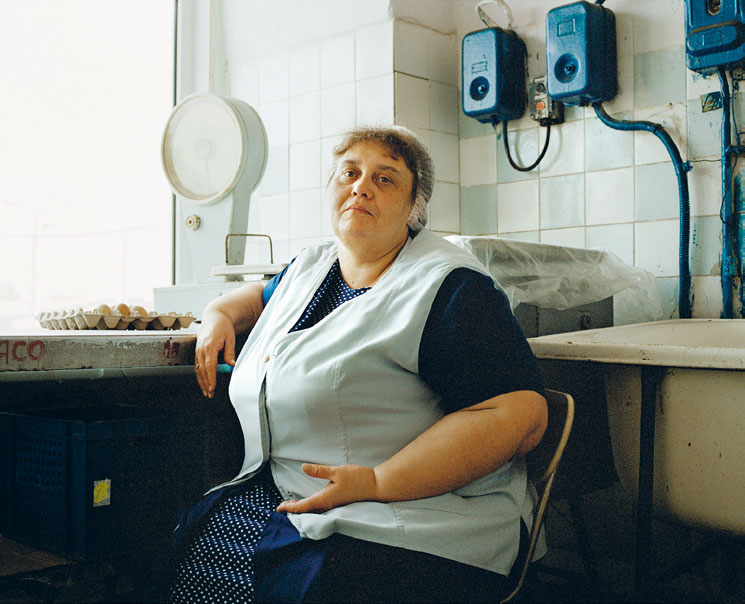 © Algirdas Bakas
© Algirdas BakasLa couverture médiatique des guerres se résume souvent à une vaste consommation d’images et à une spectacularisation de l’information. Ce constat a convaincu Yan Morvan d’orienter son travail pour témoigner autrement de la réalité des conflits et de proposer une réflexion sur l’image. Ainsi, à partir du printemps 2004, il sillonne le monde à la recherche des champs de bataille où s’est écrite l’histoire depuis 3500 ans. Mais comment parler de la guerre avec des paysages immobiles sans utiliser de procédés techniques dramatisants ? C’est là tout l’enjeu de cette série : photographier la guerre à travers son absence.
Media coverage of wars often boils down to nothing more than the mass consumption of images and infotainment, the spectacularization of information. It was this observation that prompted Yan Morvan to adopt a different approach to portraying the reality of conflict and to offer a reflection on the image. In spring 2004, he set off to travel the world in search of the battlefields that have shaped our history for 3500 years. But how can war be conveyed through still landscapes and without recourse to dramatizing technical processes? This is what this series is all about: to photograph war through its absence.
Territoires, Alhambra, Grande Salle
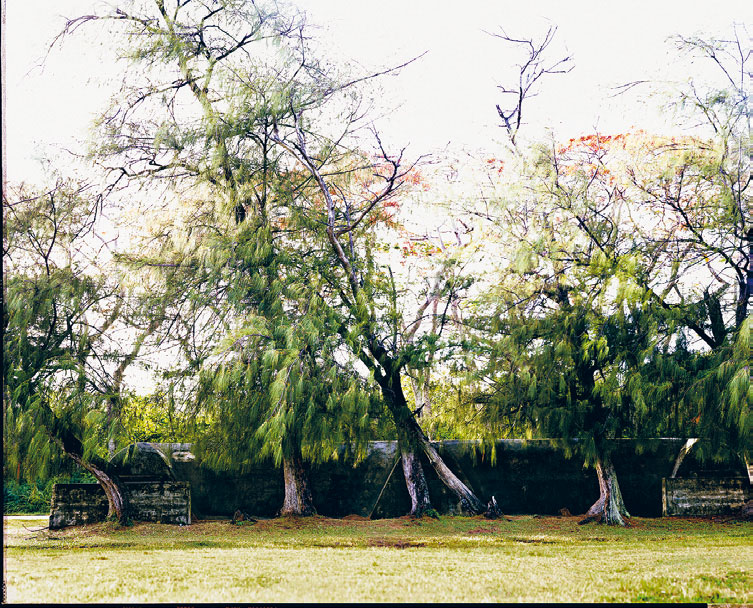 © Yan Morvan
© Yan MorvanEn s’attachant aux marges, à ce qui se passe à la périphérie, Harry Gruyaert refuse le dogme de la centralité. Dans Rivages, à l’agitation de la ville s’oppose une nature intense où la vie se dévoile, où les paysages sont imprégnés par la tension de la ligne d’horizon, où la lumière, la couleur, les personnes et les situations tissent une ambiance sereine, composent des tableaux subtilement habités.
«La réalité ressemble à un collage de Picasso dont les éléments n’étaient pas faits pour être mis ensemble, mais qui, soudain juxtaposés, signifient et disent quelque chose d’original et de très fort, insaisissable avant», dit Harry Gruyaert.
By focusing on margins, on what happens on the outskirts, Harry Gruyaert rejects the dogma of centrality. In Shores, Gruyaert opposes the hustle of the city to an intense natural world, where life is revealed, where landscapes are filled with the tension of the horizon line, and where light, colour, people and situations weave a serene atmosphere and compose subtly inhabited tableaux.
According to Harry Gruyaert: “Reality is like a collage by Picasso whose elements were not meant to be combined, but which, when suddenly juxtaposed, mean and say something original and very powerful, which was elusive before.”
Territoires, Alhambra, Grande Salle
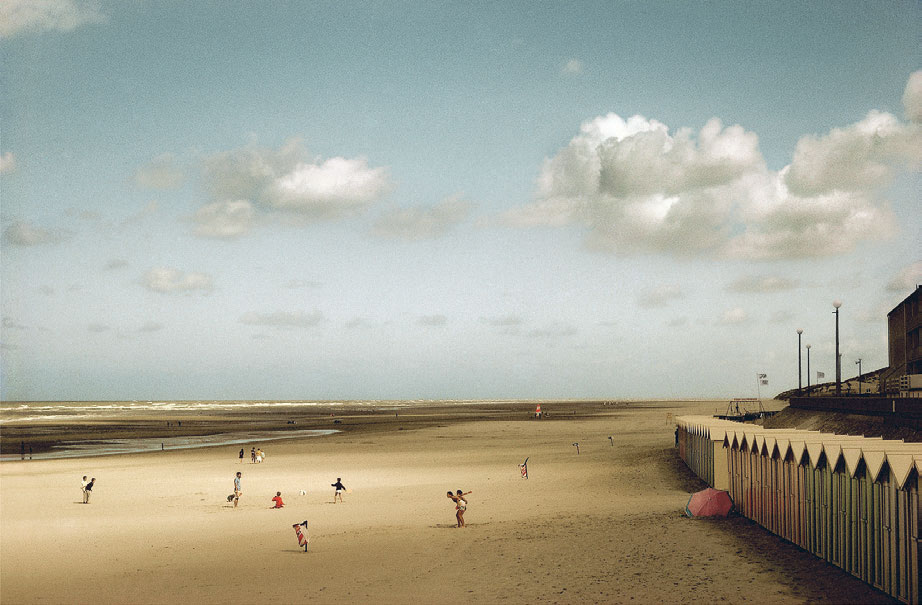 © Harry Gruyaert
© Harry GruyaertLes modifications que provoquent les activités humaines sur l’environnement remodèlent notre planète d’une façon dont nous commençons à peine à mesurer les implications. Ce constat dressé par Edward Burtynsky est à l’origine de son travail Water, un récit photographique sur l’histoire de l’eau. Il se place toujours en hauteur, pour nous emmener sur les traces naturelles et artificielles de cet élément. Un point de vue pour questionner notre relation à cette précieuse ressource. Ses images disent notre fascination pour cette substance vitale, son esthétique hypnotique et les conséquences de son exploitation par l’homme.
Changes to the environment as a consequence of human activity are reshaping the earth in ways whose implications we are only just beginning to realise. This observation by Edward Burtynsky inspired his project Water, a photographic narrative of the history of water. He always photographs from an aeriel viewpoint, taking us along the natural and artificial traces of this element; a perspective that questions our relationship to this precious resource. His images speak of our fascination with this vital substance, its hypnotic aesthetics and the consequences of its exploitation by humans.
Territoires, Alhambra, Grande Salle
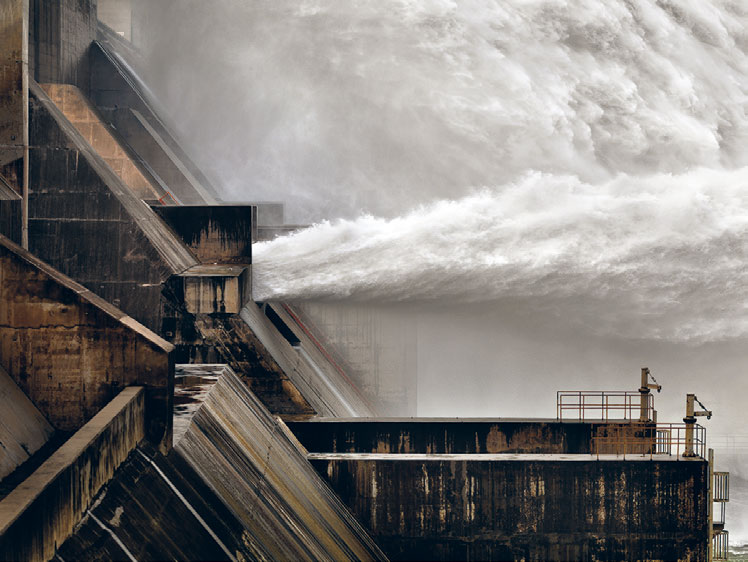 © Edward Burtynsky
© Edward BurtynskyYakushima est une île montagneuse conique du sud du Japon qui culmine à 2000 mètres. Cette île est inscrite au patrimoine mondial de l’Unesco pour sa nature. L’air océanique, chaud et moite, se concentre sur les hauteurs et se transforme en nuages et en brouillard. Il y pleut toujours quelque part et, au-dessus de 600 mètres, la forêt tropicale est une des plus humides au monde ! Le masque de la brume et le vert intense des fougères et des mousses y créent une atmosphère mystique. La photographe japonaise Yu nous livre une série d’images de cette île en nous plongeant dans un univers introspectif.
Yakushima is a conical mountainous island in the southern part of the Japanese archipelago that rises to a height of 2000 metres. The island has been designated a World Culture and Natural Heritage Site by UNESCO on account of its unique ecosystem. The warm and damp air from the sea collects on the uplands and is transformed into clouds and fog. It’s always raining somewhere and, above 600 metres, the rainforest is one of the wettest in the world! The cloak formed by the mist and the intense green of the ferns and mosses create a mystical atmosphere. The Japanese photographer Yu presents a series of images of this island, immersing us in an introspective world.
Territoires, Alhambra, Grande Salle
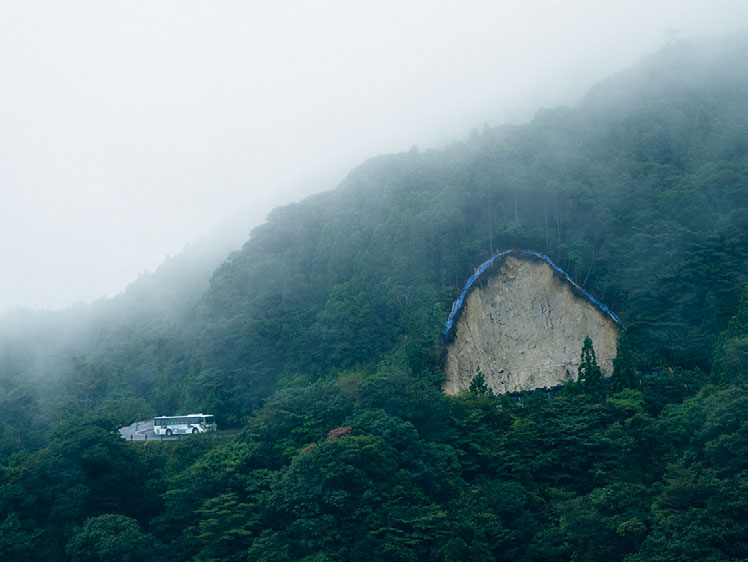 © Yu
© YuSalle de projection, Carte blanche à la HEAD – Genève
FMAC (entrée rue des Bains), Gianni Motti
La pratique photographique tient une place transversale à la HEAD – Genève, Haute école d’art et de design. Elle y est enseignée dans les départements Arts visuels et Design / Communication visuelle, reflétant à la fois l’autonomie et la réalité hybride des pratiques photographiques actuelles. La HEAD prend le parti de questionner la relation singulière et renouvelée que la photographie entretient avec le réel. Elle propose autant d’espaces pratiques et théoriques, de projets de recherche et de production explorant les frontières ténues entre information et fiction. A découvrir dans le cadre de cette première participation, un focus de réalisations d’étudiant-e-s de l’option Information-fiction et une sélection de travaux de jeunes diplômé-e-s Bachelor et Master.
Photography is a common feature of the courses offered at the Geneva University of Art and Design (HEAD – Genève). It is taught in visual arts and design departments, reflecting the autonomy and hybrid reality of current photographic practices. HEAD – Genève has chosen to examine the unique and continually renewed relationship between photography and reality. It offers many practical and theoretical spaces, as well as research and production projects that explore the fine line between information and fiction. For its first participation in this event, come and discover a focus on production by students of Information-fiction option and a selection of work by young Bachelor’s and Master’s graduates.
Art contemporain, BAC, Salle de projection
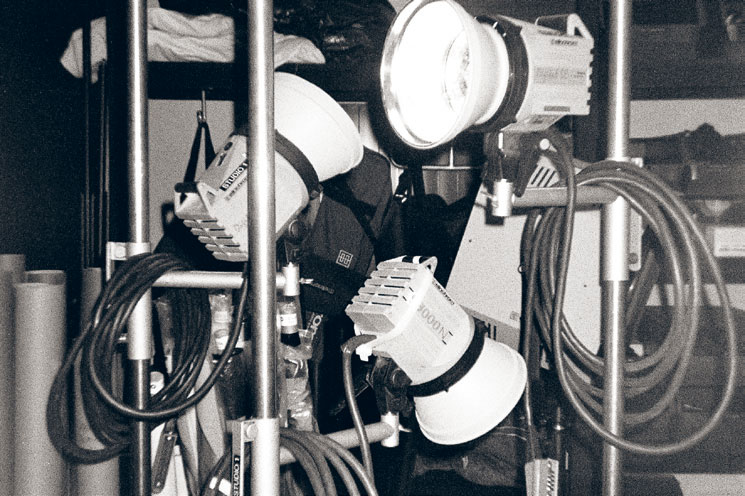 © HEAD Genève
© HEAD GenèveInstallation, diaporama
Le 11 août 1999, Gianni Motti a invité 75 artistes, locaux et internationaux, des plus jeunes aux plus reconnus, à créer une oeuvre en simultané lors de la dernière éclipse de soleil du millénaire. Au moyen d’un instantané photographique, au plus proche de l’émotion du moment, chaque artiste était libre de saisir ce phénomène astral ou toute autre situation se déroulant durant les deux heures de cet événement unique. Composée de 80 photographies présentées sous forme de diaporama, cette oeuvre collective capture en quelque sorte un instant précis de communauté planétaire.
Proposé par le Fonds d’art contemporain de la Ville de Genève
Installation, slideshow
On 11 August 1999, Gianni Motti invited 75 local and international artists, from the youngest to the most well-known, to create a simultaneous artwork during the last solar eclipse of the millennium. Making use of the emotional immediacy of snapshots, each artist was free to photograph this astral phenomenon or anything else happening during the two hours of this unique event. With its 80 images presented as a slideshow, this common project captures a precise moment of global community.
Proposed by the Contemporary Art Fund of the City of Geneva (FMAC)
Art contemporain, BAC, FMAC (entrée rue des Bains)
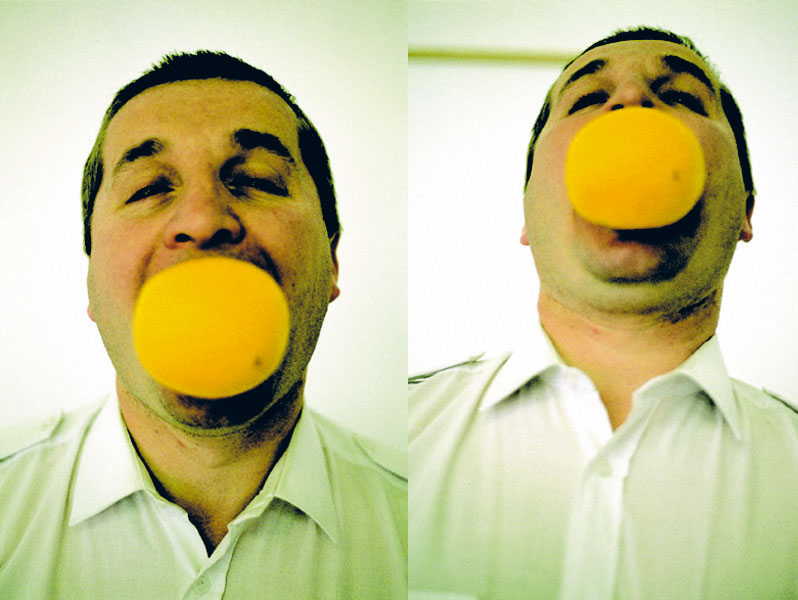 © Erwin Wurm
© Erwin WurmDroits humains : Agence Rezo / Jean Revillard | Agence Rezo / Christophe Chammartin | Musée de l’Elysée | Festival FIFDH - Leila Alaoui
De 2009 à 2016, la ville de Patras en Grèce comptait une des plus importantes concentrations de réfugiés en Europe. La plupart d’entre eux tentaient de franchir la frontière vers l’Italie en montant dans les camions qui empruntaient le ferry. Une zone résidentielle de Patras regroupait 3000 personnes dans un camp au début de ces migrations. La Grèce étant le premier pays d’entrée en Europe pour ces réfugiés, c’est aussi là que finissait la majorité de ceux qui étaient renvoyés d’Europe et de Suisse. Néanmoins, ces retours à la case départ ne décourageaient pas les nouveaux candidats à poursuivre leur voyage.
Patras est la preuve des dérives de la politique européenne en matière de migration et de l’aberration des accords de Dublin en matière de gestion de ces flux de populations.
Between 2009 and 2016, the city of Patras in Greece had one of the largest concentrations of refugees in Europe, most of whom tried to cross the border into Italy by climbing into the lorries boarding the ferry. In one residential area of Patras, 3000 displaced people were housed in a camp when these migrations first began. As Greece is the gateway into Europe for these refugees, it’s also the place where most of those expelled from other European countries and Switzerland end up. Yet the possibility of being sent back to square one hasn’t discouraged new applicants from continuing their journey.
Patras is proof of European migration policy abuses and the complete inadequacy of the Dublin agreements in managing these population flows.
Droits humains, Auditorium Arditi
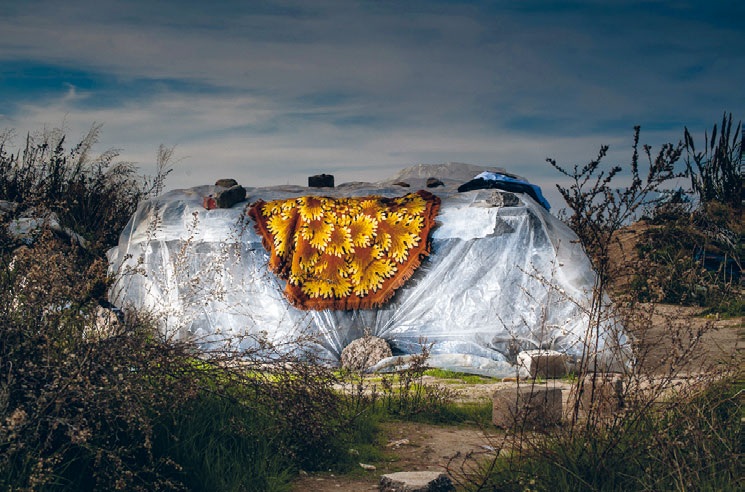 © Jean Revillard
© Jean RevillardLa Roumanie compte 22 millions d’habitants, 30% d’entre eux sont paysans. La population agricole des nouveaux Etats membres de l’Union européenne diminue, parallèlement à l’augmentation de la compétitivité de leur agriculture.
Christophe Chammartin est parti sur les routes de l’Europe pour comprendre comment les paysans roumains vivent leur nouvelle réalité. L’autosubsistance paysanne, très répandue dans les campagnes roumaines, est mise en concurrence avec des entreprises agro-industrielles de l’Ouest.
Les images de ce reportage socio-poétique sont réalisées avec de vieux films négatifs couleur afin de transmettre l’émotion particulière qu’inspirent les forêts transylvaniennes.
Romania has 22 million inhabitants, 30% of whom are peasant farmers. The rural population of the new Member States of the European Union is decreasing at the same time as the competitiveness of their agriculture is increasing.
Christophe Chammartin took to the roads of Europe to see how the traditional Romanian farmers are adapting to this new reality. Rural self-sufficiency, widespread in the Romanian countryside, now has to compete with Western agro-industrial firms.
The images making up this socio-poetic reportage were taken using old negative colour films to convey the special emotions evoked by the Transylvanian forests.
Droits humains, Auditorium Arditi
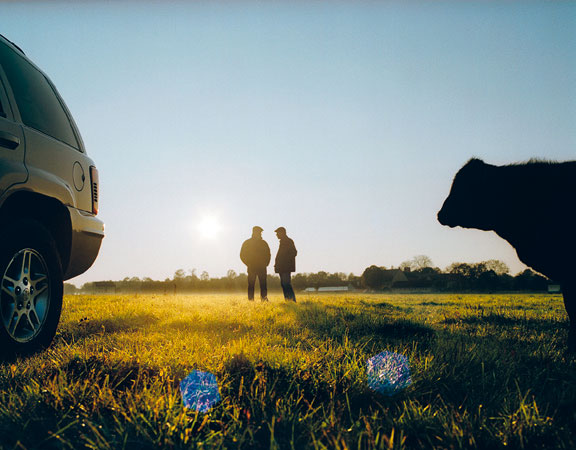 © Christophe Chammartin
© Christophe ChammartinReconnu à l’échelle internationale, le Musée de l’Elysée à Lausanne est entièrement consacré à la photographie. Il invite, pour No’Photo, l’artiste plasticienne Agnès Geoffray à se plonger dans ses collections. En dialogue avec Caroline Recher, conservatrice, elle construit une réflexion en images à partir d’un album documentant l’échange de prisonniers après la Première Guerre mondiale. Par des montages, des manipulations et des juxtapositions avec d’autres images, le projet esquisse une pensée sensible autour de la question des droits de l’homme et de la notion de protection.
Production originale du Musée de l’Elysée basée sur sa collection en collaboration avec l’artiste Agnès Geoffray.
The internationally renowned Musée de l’Elysée in Lausanne is entirely devoted to photography. For No’Photo, the Musée de l’Elysée invited visual artist, Agnès Geoffray, to explore the museum collections. Working in close collaboration with curator Caroline Recher, Geoffray developed a project using the images of an historic album documenting prisoner exchanges following World War I. Through sensitive editing, manipulating, and juxtaposition of these photographs, the project proposes a sensitive reflection on questions of human rights and the notions of protection. An original production by the Musée de l’Elysée from the museum collection, in collaboration with visual artist Agnès Geoffray.
Droits humains, Auditorium Arditi
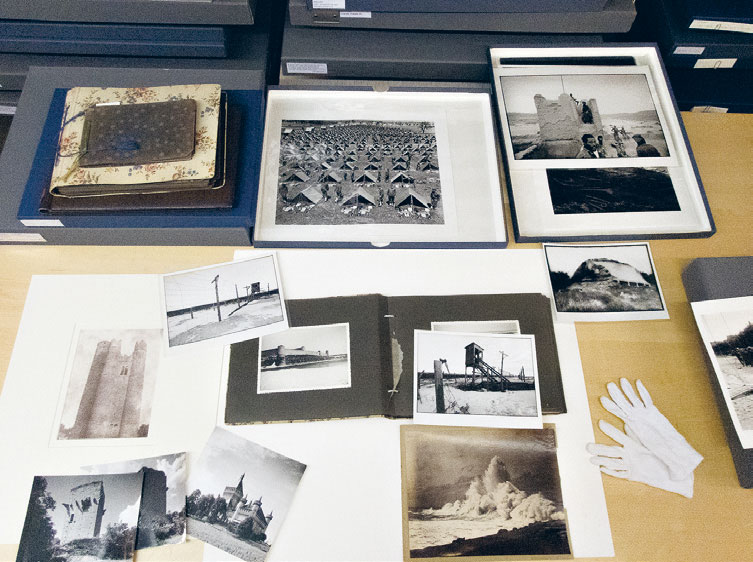 © Agnès Geoffray / Collection du Musée de l'Elysée
© Agnès Geoffray / Collection du Musée de l'ElyséeEn novembre 2013, l’artiste Leila Alaoui a été choisie par le Danish Refugee Council (DRC) pour réaliser une série de photographies illustrant les conditions de vie des réfugiés syriens au Liban, dont le nombre s’élève aujourd’hui à presque deux millions. En coordination avec les membres du DRC, Leila Alaoui a parcouru le Liban à la rencontre des hommes, femmes et enfants victimes de cette crise. Si ses portraits témoignent de l’expérience tragique de l’exil, son sens artistique révèle également l’espoir et la résilience d’un peuple, souligne son humanité et lui rend ainsi hommage.
Exposition présentée dans le cadre du Festival du film et forum international sur les droits humains (FIFDH) à Genève en mars 2016, en partenariat avec la Fondation Leila Alaoui et le Danish Refugee Council.
In November 2013, the artist Leila Alaoui was commissioned by the Danish Refugee Council (DRC) to create a series of photographs illustrating the living conditions of around two million displaced Syrians living in Lebanon today. In coordination with DRC staff, Leila Alaoui toured Lebanon to meet the men, women and children who are the victims of this crisis. Though her portraits attest to the tragic experience of displacement, her artistic sensitivity also captures the hope and resilience of a people, underlines their humanity and so pays tribute to them.
This exhibition was presented as part of the International Film Festival and Forum on Human Rights (FIFDH) held in Geneva in March 2016, in partnership with the Leila Alaoui Foundation and the Danish Refugee Council.
Droits humains, Auditorium Arditi
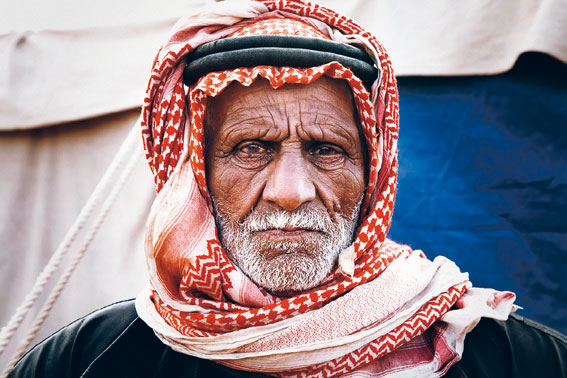 © Leila Alaoui
© Leila AlaouiSalle de projection, Collections photographiques : MEG | Daniel Winteregg | Les clichés-verre : entre dessin et photographie | Fred Boissonnas
Edgar Aubert de la Rüe, géologue, géographe et photographe, a fait don de ses archives photographiques au MEG dans les années 1980. Né à Genève en 1901, il a fait de nombreux voyages à travers le monde pendant plus de quarante ans à des fins de recherche. De la Rüe a classifié ses photographies et ses objets d’étude d’une façon unique, constituant une collection fascinante. En 2014, l’artiste brésilien Mabe Bethônico a travaillé sur ses oeuvres, observant ses voyages, ses méthodes et son regard singulier sur le monde. A travers l’analyse de ses images et écrits, ce projet vise à faire reconnaître un auteur oublié, tout en contant la vie et le paysage ainsi qu’en interprétant la géographie et la subjectivité.
Edgar Aubert de la Rüe, geologist, geographer and photographer, donated his photographic archives to the MEG in the 1980’s. Born in Geneva in 1901, he travelled extensively for more than 40 years around the world for research. De la Rüe classified his photographs and study materials in a unique way, building a fascinating collection. In 2014, Brazilian artist Mabe Bethônico worked on his material, observing De la Rüe travels, methods and his particular view of the world. Through the analysis of his images and writings this project aims at recognizing a forgotten author while narrating life and landscape and interpreting geography and subjectivity.
Collections photographiques, MEG, Salle de projection
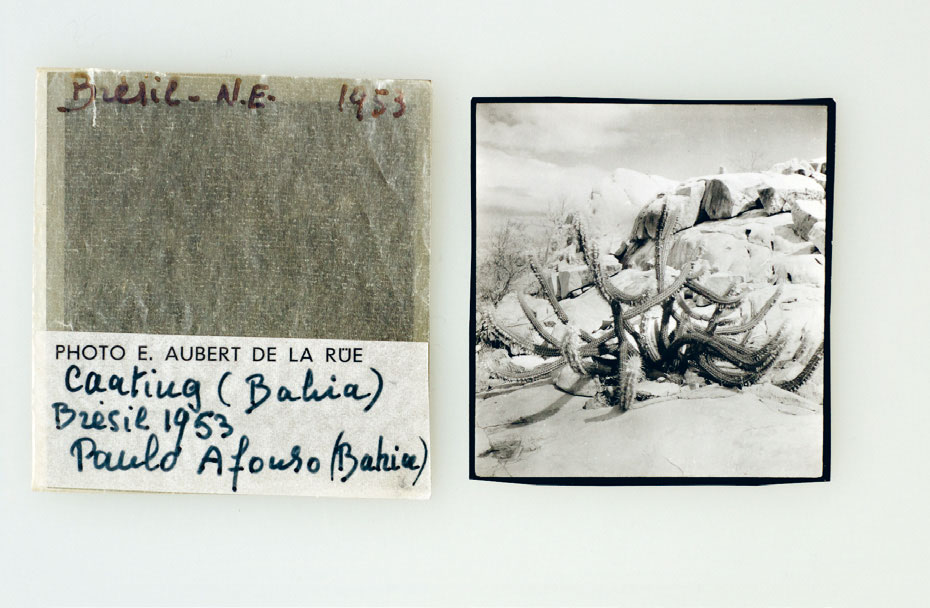 © Aubert de la Rüe / MEG
© Aubert de la Rüe / MEGPar l’intensité de son travail, fait de plusieurs reportages par jour pendant vingt-cinq ans, Daniel Winteregg a constitué un patrimoine visuel irremplaçable sur la fin du XXe siècle et les premières années du XXIe. On le sait, Genève offre une situation favorable au photojournalisme grâce à sa vie internationale. Winteregg a pu documenter l’émancipation des femmes dans la vie politique suisse que symbolise l’élection d’une présidente de la Confédération comme l’avènement de mouvements sociaux inédits, la culture squat, le mouvement LGBT ou l’affirmation publique de la communauté musulmane.
Suivi d’un entretien avec Daniel Winteregg, à 20h Sélection de photographies proposée par le Centre d’iconographie de la Bibliothèque de Genève
Twenty-Five Years of Photojournalism in Geneva (1985-2009) Through his intense working practice, producing several reports a day for twenty-five years, Daniel Winteregg has built up a unique visual heritage spanning the late 20th and early 21st century. As we well know, Geneva is a favourable location for photojournalism because of its international dimension. Winteregg documented the empowerment of women in political life in Switzerland, symbolized by the election of a female president of the Swiss Confederation, the emergence of new social movements, the squat culture, the LGBT movement and the public affirmation of the Muslim community.
Followed by an interview with Daniel Winteregg at 8pm Selection of photographs proposed by the Centre for Iconography of Geneva Library
Collections photographiques, MEG, Salle de projection
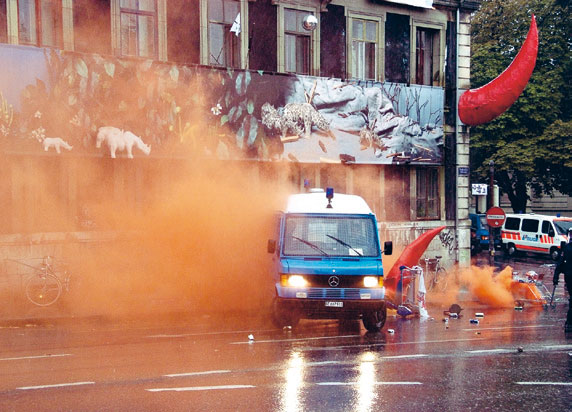 © Daniel Winteregg
© Daniel WintereggA la fin des années 1850, le cliché-verre est introduit au sein de l’école de Barbizon connue pour sa pratique de la peinture en plein air. La technique séduit Corot qui grave 70 planches sur verre. Tombée dans l’oubli pendant un demi-siècle, elle attire l’attention de Man Ray lequel expérimente le procédé dès 1917. Il sera suivi par Ernst et Picasso puis par des artistes comme Tal Coat ou Markus Raetz.
Collection du Cabinet d’arts graphiques du MAH, Genève
In the late 1850s, the cliché-verre process was adopted by artists of the Barbizon school, known for their “plein air” practice of painting outdoors. The technique seduces Corot who engraves 70 boards on glass. Totally forgotten for half a century, the technique of clichéverre attracted the attention of Man Ray, who began experimenting with the process in 1917. He would be followed in this by Max Ernst and Pablo Picasso, then by other contemporary artists such as Pierre Tal Coat and Markus Raetz.
Collection of the Cabinet d’arts graphiques of the MAH, Geneva
Collections photographiques, MEG, Salle de projection
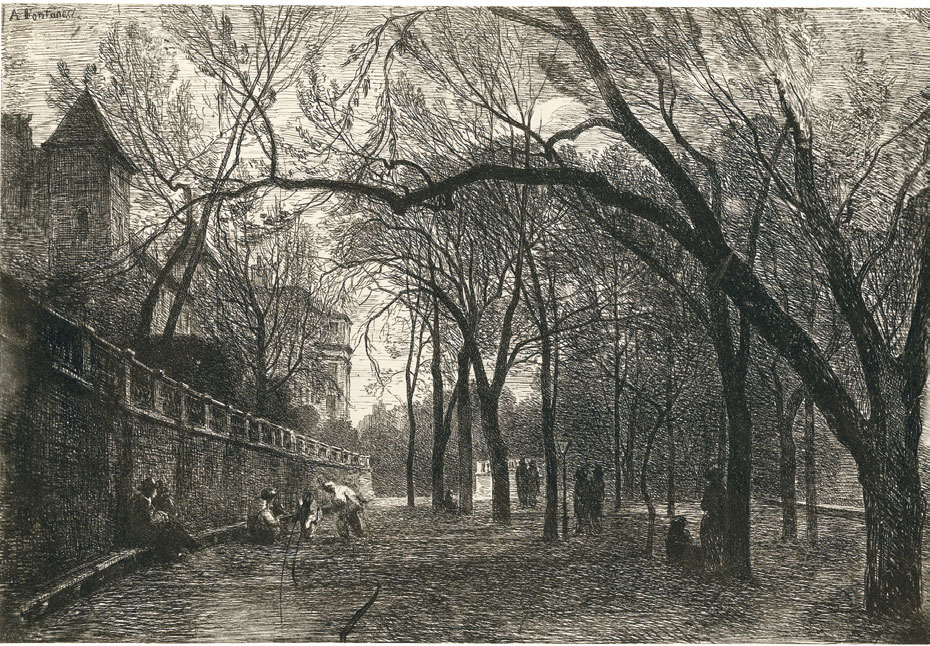 Antonio Fontanesi, © Cabinet d'arts graphiques des Musées d'art et d'histoire, Genève
Antonio Fontanesi, © Cabinet d'arts graphiques des Musées d'art et d'histoire, GenèveEn 1904, Fred Boissonnas monte une double exposition, qui réunit ses prises de vue de Grèce et celles du «Geste en état d’hypnose». Images de l’Antiquité classique et danses «automatiques» – c’est-àdire des performances accomplies par une jeune femme, Magdeleine G., hypnotisée par le docteur Auguste Magnin – participent d’un même idéal, celui d’une Antiquité réactivée par le regard photographique. Ces expériences trouvent plus tard des prolongements dans les collaborations que Boissonnas engage avec le compositeur Emile Jaques-Dalcroze, auquel il propose ses «Etudes instantanées de plastique animée», et avec le traducteur d’Homère, Victor Bérard, pour lequel il entreprend un voyage autour de la Méditerranée «sur les traces d’Ulysse».
Collection du Centre d’iconographie de la Bibliothèque de Genève
In 1904, Fred Boissonnas staged a dual focus exhibition that combined his photographs of Greece with those of «movement in a state of hypnosis». His images of ancient Greek sites and of the “automatic” dances performed by a young woman, Magdeleine G., hypnotized by Dr Auguste Magnin, share the same ideal, that of the revival of Antiquity through the perspective of photography. These experiments were later furthered by Boissonnas’ collaborative work with the composer Emile Jaques-Dalcroze, to whom he proposed his «Instantaneous Studies for Figures in Motion» and with the translator Homer Victor Bérard for whom he undertook a journey around the Mediterranean «in the footsteps of Ulysses».
Collection of the Centre for Iconography of Geneva Library
Collections photographiques, MEG, Salle de projection
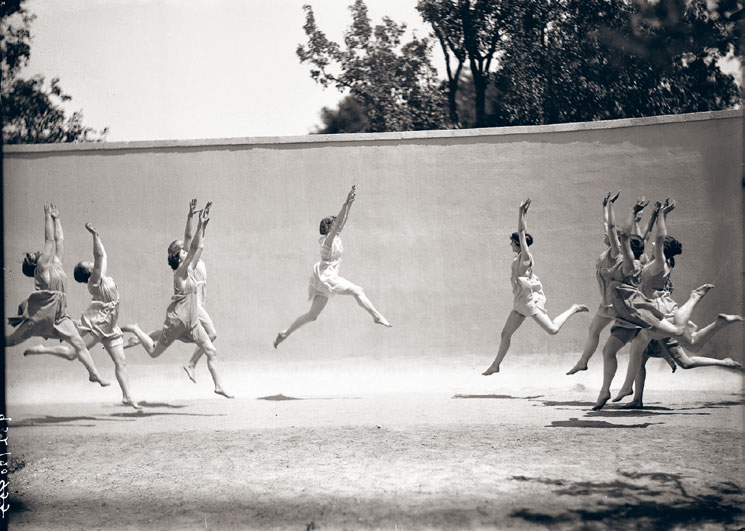 © Fred Boissonnas
© Fred BoissonnasFonction : cinéma, Sélection Genève : Lundi13 | Phovea | Mark Henley | Stéphanie Buret | Olivier Vogelsang | Magali Girardin | Steeve Iuncker | David Wagnières
Les Cinémas du Grütli, Projection de films
L’agence Lundi13 revendique et cultive la diversité de ses regards : des grands despotes aux petits patrons, du Locle à Tchernobyl. Le projet Fusion est l’occasion de confronter ces images venues des quatre coins du monde et traitant d’aspects différents de la société. Un étrange équilibre naît de ce chaos revendiqué.
www.lundi13.ch
Photos de : François Wavre, Nicolas Righetti, Guillaume Perret, Fred Merz et Niels Ackermann
The Lundi13 agency cultivates and prides itself on the diversity of its perspectives: from despots to small bosses, from Locle to Chernobyl. The Fusion project is an opportunity to unite these images from the four corners of the earth that deal with varied aspects of society. A strange equilibrium emerges from this asserted chaos.
www.lundi13.ch
Photos by: François Wavre, Nicolas Righetti, Guillaume Perret, Fred Merz and Niels Ackermann
Sélection Genève, Maison des arts du Grütli, Fonction : cinéma
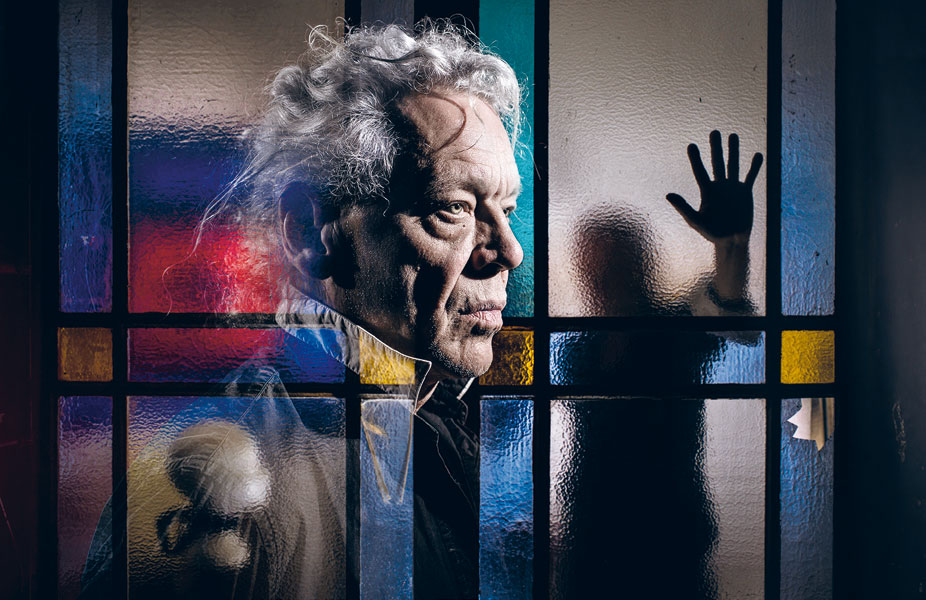 © Fred Merz
© Fred MerzDans l’oeil humain le terme fovéa désigne la fosse minuscule dans la rétine qui permet l’acuité maximale de la vision.
Phovea est une agence photographique fondée à Genève en 2011. Ses photographes sont sélectionnés pour leur langage visuel unique et fort. Leurs travaux personnels font régulièrement l’objet d’expositions, prix, livres et publications, nationalement et internationalement.
Cette projection est l’occasion de réunir dans une seule narration les rencontres figées le long de leurs chemins. Des images d’une géographie distante et universellement proches dans leur humanité.
Photos de : Reto Albertalli, Adrien Golinelli, Julien Gregorio, Patrick Gilliéron Lopreno, Delphine Schacher, François Schaer, Neige Sanchez, Brian Walkerwww.phovea.com
In the human eye, the term fovea denotes the small pit in the retina which allows for maximum acuity of vision.
Phovea is a photographic agency set up in Geneva in 2011. Its photographers are selected for their unique and strong visual language. Their individual work features regularly in exhibitions, prizes, books and publications, both nationally and internationally.
This projection is the opportunity to combine in a single narrative the encounters captured by the photographers along their different journeys. Images of distant lands with universal closeness in their humanity.
Sélection Genève, Maison des arts du Grütli, Fonction : cinéma
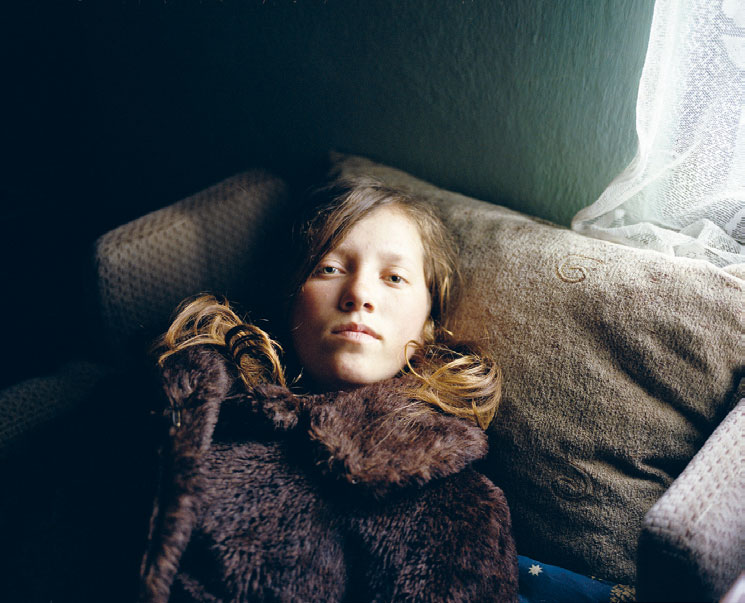 © Delphine Schacher, phovea
© Delphine Schacher, phoveaCourts extraits de projets à long terme. Bank on us emploie le genre du film noir pour explorer la fin du secret bancaire, inspiré par le très fameux Le Troisième Homme. Two Minutes to Midnight trace l’échec constant de la Conférence sur le désarmement à l’ONU à Genève, dénuée du moindre programme de travail depuis vingt ans, mais seul endroit au monde où tous les acteurs du nucléaire se trouvent dans la même pièce, semaine après semaine, année après année… Alors que la situation globale empire et que l’horloge de la fin du monde indique minuit moins cinq, puis moins trois, moins deux, toujours plus près de la fin…
Brief extracts from long-term projects. Bank on Us uses Film noir style to explore the end of banking secrecy, inspired by The Third Man. Two Minutes to Midnight tracks the ongoing failure of the Conference on Disarmament at the UN in Geneva, without even so much as a program of work for tha last 20 years, but still the only place in the world where all the nuclear players are in the same room, week after week, year after year… as the global situation worsens and the Doomsday Clock ticks down from five, to three, to two minutes to midnight and counting…
Sélection Genève, Maison des arts du Grütli, Fonction : cinéma
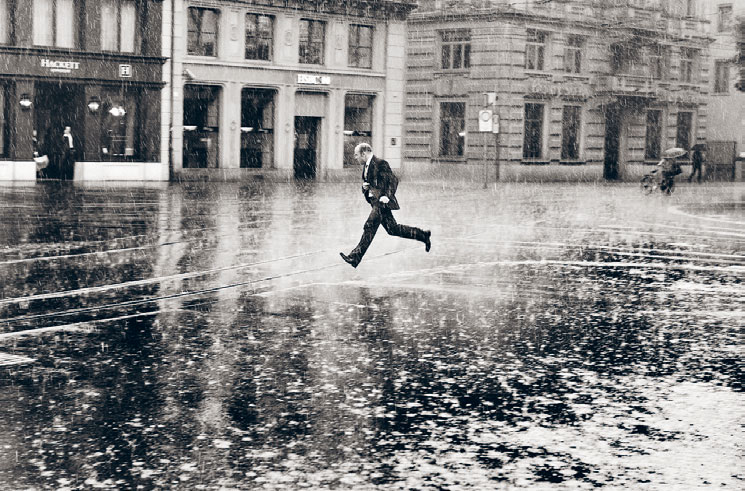 © Mark Henley
© Mark HenleyA 60 kilomètres de Séoul, la «Smart City» de Songdo, dont la construction débute en 2003, est peut-être la nouvelle ville du futur.
Elle incarne notre intérêt croissant pour les nouvelles technologies et leur impact sur la vie quotidienne dans un souci pratique comme écologique. Mais elle symbolise aussi cette dictature invisible du numérique, notre tyrannie du bien-être et l’obsession de la sécurité.
Les appartements sont, en effet, tous identiques et construits dans des tours, il y a beaucoup d’espaces verts et peu de trafic, des institutions de formation de prestige et surtout une interconnexion et un contrôle digital total. Les habitants sont prêts à payer ce prix pour un haut standard de sécurité.
Situated 60 kilometres from Seoul, the smart city of Songdo, under construction since 2003, is perhaps the city of the future.
It embodies our growing interest in new smart technologies and their impact on everyday life through its practical and ecological approach. Yet it also symbolizes the invisible dictatorship of digitalization, our tyranny of well-being and our obsession with security.
The apartments are in fact all identical and built as residential towers. There’s plenty of green space and little traffic, as well as prestigious educational institutions, but above all total digital control and interconnectedness. The inhabitants are willing to pay this price for a high level of security.
Sélection Genève, Maison des arts du Grütli, Fonction : cinéma
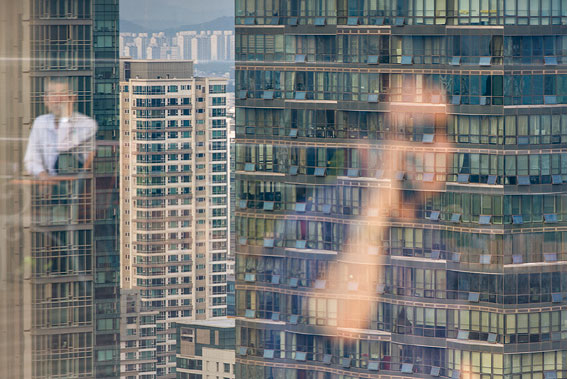 © Stéphanie Buret
© Stéphanie BuretCraignant des contre-manifestations et des débordements, les autorités avaient interdit la conférence annuelle du Conseil central islamique. Ce que n’a pas accepté l’association de la Jeunesse islamique de Suisse. Celle-ci a appelé à une manifestation, finalement autorisée. Le 29 novembre 2014, quelque 300 personnes se sont retrouvées ainsi à Fribourg sur la place Georges-Python, dans une ambiance pacifique. Certaines personnes ou groupes ont malgré tout tenté de déstabiliser la manifestation.
Fearing counter-demonstrations and public disorder, the authorities banned the annual conference of the Central Islamic Council. The Association of Islamic Youth Switzerland, refusing to accept this decision, called for a demonstration, which was finally authorized. On 29 November 2014, some 300 people gathered peacefully on the Place Georges-Python in Fribourg. Some people or groups nevertheless tried to disrupt the event.
Sélection Genève, Maison des arts du Grütli, Fonction : cinéma
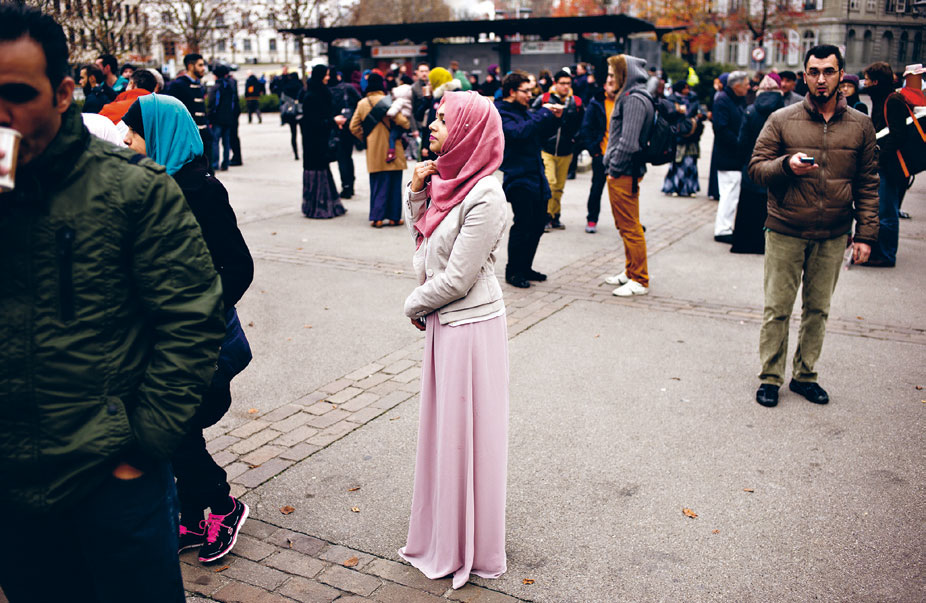 © Olivier Vogelsang
© Olivier VogelsangDes baraquements en bois plantés au milieu de nulle part, entre une piste d’aéroport et la bretelle d’une autoroute. L’odeur du kérosène se mêle à celle des gaz d’échappement, le bruit des moteurs répond à celui des réacteurs. Dans cet entre-deux à l’humanité relative, des familles entières vivent jour et nuit, certaines depuis plusieurs années. Elles ont fui les conflits armés, les guerres civiles, les exactions. Les voici à Genève, dans cette ville à la longue tradition humanitaire qui manque de lieux adéquats pour loger les requérants d’asile. Les images documentent ce voisinage hostile et insalubre, sans oublier les regards de l’enfance, seule promesse quotidienne d’un ailleurs et d’un futur apaisés.
Wooden barracks built in the middle of nowhere, between an airport runway and a motorway junction. The smell of kerosene mingles with that of the exhaust fumes, while the din of the traffic echoes that of the jet engines. Whole families live day and night in this no-man’s land of relative humanity, some of them for several years now, having fled armed conflicts, civil wars and abuse. They find themselves here in Geneva, in this city with a long humanitarian tradition that lacks adequate places to accommodate asylum seekers. The images document this hostile and unhealthy environment, while not forgetting the eyes of the children, the only daily promise of a more peaceful future.
Sélection Genève, Maison des arts du Grütli, Fonction : cinéma
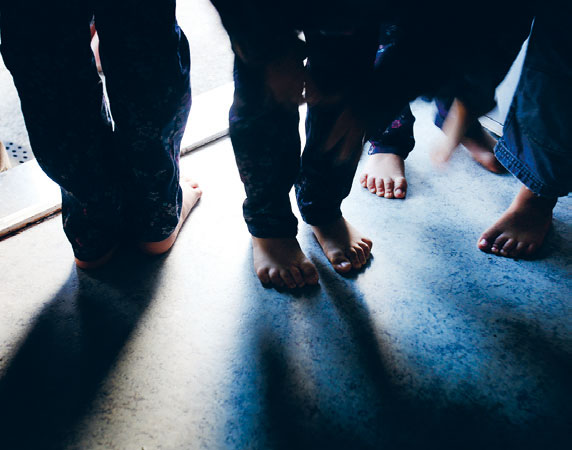 © Magali Girardin
© Magali GirardinJe suis parti pour voir. Sentir, par moi-même, au-delà de ce qui est présenté au sujet de l’une des régions les plus médiatisées du monde, jour après jour, à travers les médias, du journal au téléjournal, du matin au soir. Assez du rôle de témoin-coupable dont nous endosse la presse pour nous intéresser au monde. Impuissant d’action et malgré tout responsable.
Suis-je un de ces badauds privilégiés qui s’octroie le droit de donner son avis ? Est-ce légitime de vous concerner par des événements que moi-même je ne comprends pas ? Dans quel but ?
I went to see for myself. To feel for myself, beyond everything we’re being told about one of the world’s most mediatized areas, day after day in the media, in newspapers and on the news, morning to night. I’d had enough of the role of guilty witness that the press shoulders us with to make us take an interest in the world. Powerless to act and yet responsible.
Am I one of those privileged onlookers who give themselves the right to voice their opinion? Is it legitimate to concern yourself with events that I don’t even understand myself? For what purpose?
Sélection Genève, Maison des arts du Grütli, Fonction : cinéma
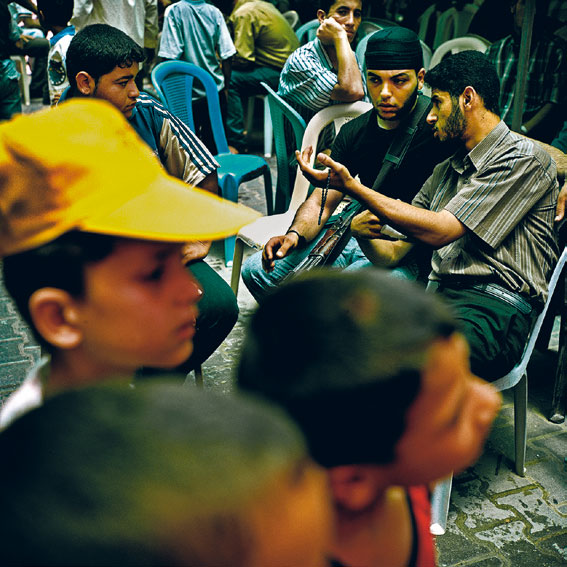 © Steeve Iuncker
© Steeve IunckerSe tenir par l’épaule. Faire une prière en regardant le ciel. Essuyer les gouttes de sueur, les brins d’herbe sur la joue. Remonter ses chaussettes. Fermer les yeux durant l’hymne national. Etre applaudi. Tomber, se relever, repartir en trottinant sous les encouragements. Gagner la coupe ou la perdre pour un rien. Etre semblable aux autres.
Le Tournoi des Schtroumpfs, tournoi européen de football pour personnes mentalement handicapées, se déroule toutes les années lors du week-end de Pentecôte à Bernex. Il regroupe dix-huit équipes de huit nations.
Putting their arms around each other’s shoulders. Praying while looking up at the sky. Wiping off the drops of sweat, the blades of grass on their cheeks. Pulling up their socks. Closing their eyes during the national anthem. Being applauded. Falling down, getting up again, jogging back to the sound of encouragement. Winning the cup or losing it by a hair’s breadth. Being like other people.
The Smurf Tournament, a european football tournament for people with learning difficulties, is held every year over the Whitsun weekend in Bernex (GE). It welcomes 18 teams from eight countries.
Sélection Genève, Maison des arts du Grütli, Fonction : cinéma
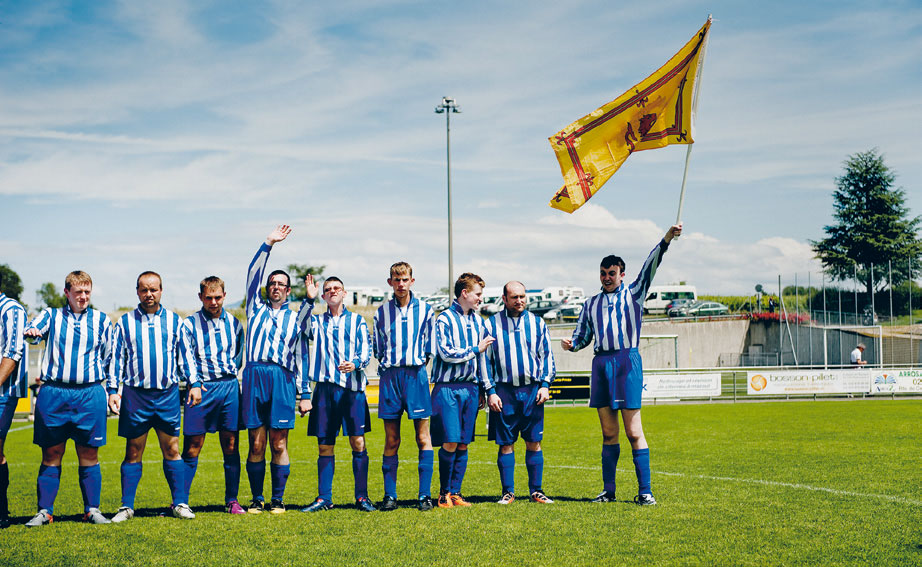 © David Wagnières
© David WagnièresChristian Frei (Suisse, 2002, 97’)
15h45 / 21h
Le photographe américain James Nachtwey est considéré comme l’un des meilleurs de sa profession. Christian Frei, réalisateur et producteur suisse, part sur les traces de James Nachtwey…
The American photographer James Nachtwey is considered one of the best of his profession. Christian Frei, director and Swiss producer, follows in the footsteps of James Nachtwey…
Heinz Bütler (Suisse, 2003, 72’)
17h30 / 00h45
«Henri Cartier-Bresson – Biographie d’un regard» est un des derniers films tournés avec la complicité du photographe. Henri Cartier-Bresson commente plusieurs de ses photos.
“Henri Cartier-Bresson – Biography of a glance” is one of the last films shot with the complicity of the photographer. Henri Cartier- Bresson comments on several of his pictures.
Wim Wenders (USA, 2014, 110’)
19h / 22h45
Wim Wenders, admiratif du travail du photographe brésilien Sebastião Salgado, décide de dédier un documentaire à cet observateur de la nature humaine.
Wim Wenders, admiring the work of the Brazilian photographer Sebastião Salgado, dedicates a documentary to this observer of human nature.
Projection de films, Maison des arts du Grütli, Les Cinémas du Grütli
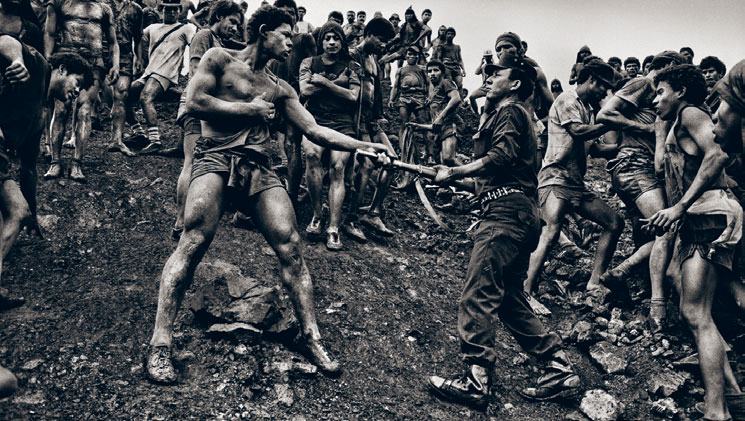 © Sebastião Salgado
© Sebastião SalgadoPartir à la découverte de leur quartier, marcher, errer, chercher l’exotisme au coin de la rue constitue le coeur de l’enquête Vis-à-vis, une mission de six mois offerte à huit photographes par la Ville de Genève.
Les contrastes saisissants de Patrick Lopreno (Pâquis), les jeux de symétries d’Aurélien Bergot (Acacias), la poésie du fragment chez Elisa Larvego (Saint-Jean), le dépaysement et la féerie des langages de Julien Gregorio (Grottes) et Magali Dougados (Eaux-Vives), la majesté des vues nocturnes de Nicolas Schopfer (Plainpalais), et enfin l’humour et l’humanité d’Emmanuelle Bayart (Petit- Saconnex) et Carole Parodi (Champel) sont autant d’outils déployés par ces propositions photographiques résolument inscrites dans la tradition de la photographie de rue.
Setting off to explore their district, walking, wandering, seeking the unusual around the next corner is central to the Vis-à-Vis survey, a six-month project for eight photographers commissioned by the City of Geneva.
The striking contrasts of Patrick Lopreno (Pâquis), the symmetries of Aurélien Bergot (Acacias), the poetic fragments of Elisa Larvego (Saint-Jean), the disorientation and expressive magic of Julien Gregorio (Grottes) and Magali Dougados (Eaux-Vives), the majestic night views of Nicolas Schopfer (Plainpalais), and the humour and humanity of Emmanuelle Bayart (Petit-Saconnex) and Carole Parodi (Champel) are among the means deployed in these photographic proposals set firmly within the tradition of street photography.
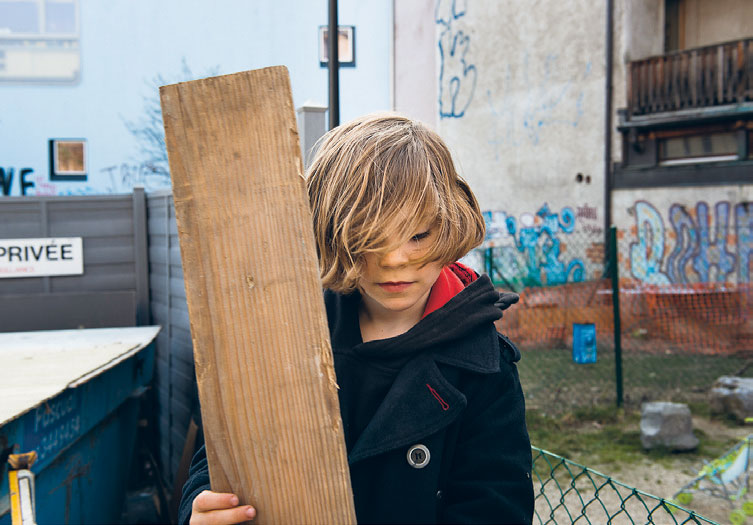 © Julien Gregorio
© Julien Gregorio